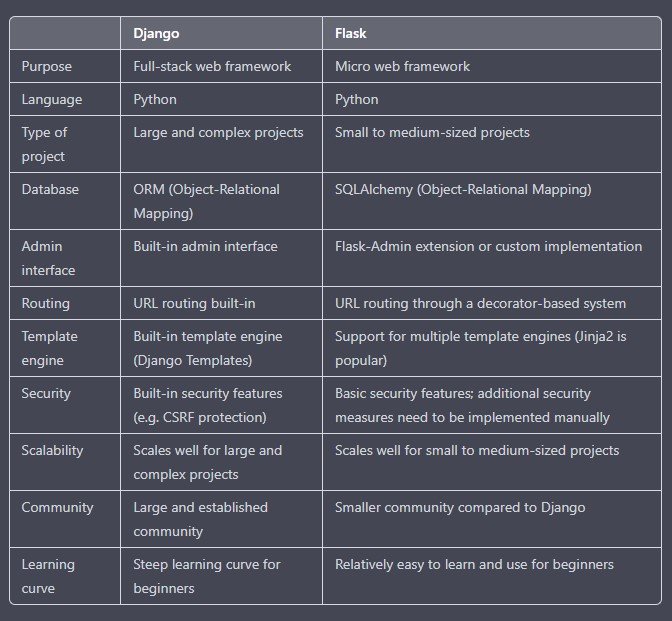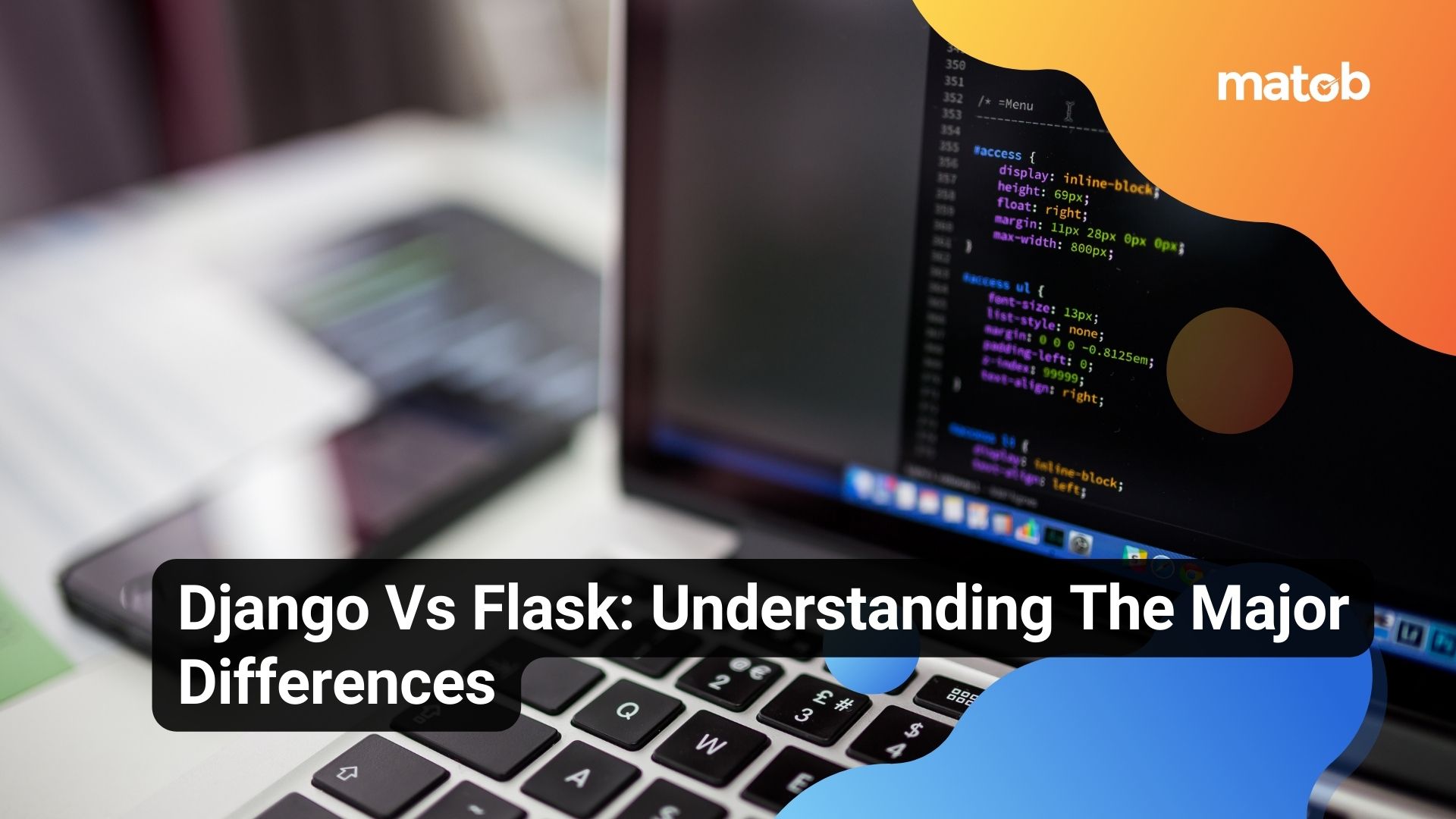Python is one of the most popular programming languages today. Python is the second most used programming language after JavaScript surpassing Java.
Just like JavaScript, Python has many frameworks you can use to create your projects. Some Python frameworks that are currently popular among developers are Flask and Django.

Flask Overview
Flask is a Python Framework with a microframework type under the BSD license. The creation of this Flask is inspired by the Sinatra Ruby Framework, a microframework that requires the Jinja 2 template and the Werkzeug WSGI toolkit. Flask is classified as a lightweight application to use with its modular design making it easy for developers to adapt to this framework.
Flask allows developers to build a web application with a solid foundation and will enable developers to use various types of extensions as needed. Flask has several standard functions for developers to add multiple libraries or plugins to an extension.
If you want a simple and innovative addition to your existing applications, Flask can be your choice because of its flexibility. Flask has a small set of easy-to-learn APIs, and the documentation is good.
For beginners new to Python, you can start web development with Flask to get a feel for both the back-end and the front-end while also learning the core concepts well.
Flask’s features
Flask also comes with the following features:
- Flask gives you complete control in building your application during the development or implementation stage.
- Flask has a built-in development server and a very fast debugger.
- Flask has a neat and coherent API.
- Flexible and easy to configure.
- Flask has both RESTful and HTTP request handling.
- Supports unified unit tests.
- Flask has two major dependencies, namely Werkzeug and Jinja 2, which provide robust WSGI support and templates.
Flask Pros and Cons
Every software development certainly has advantages and disadvantages. Here are the advantages and disadvantages of Flask.
Pros
1. Easy to understand
Flask is a framework suitable for beginners because it is easy to understand. This framework is also simple enough so developers can easily create navigation and applications. Unlike other Frameworks, Flask gives you complete control in web development.
2. Flexible
Flask is classified as a simple and minimalistic framework, so almost all parts of Flask can be opened and changed, unlike some other frameworks. Flask has templates that let you use the same user interface for multiple pages.
3. Testing
Using Flask for web development allows you to unit test via integrated support, a built-in development server, a fast debugger, and RESTful requests. Even this lightweight Flask will enable you to transit to web frameworks with just a few extensions easily.
Cons
1. Single source
This single source owned by Flask means Flask will handle each request in turn, one at a time. This causes you to serve more than one request, which takes more time. With fewer tools, you may need to install more modules. This can be mitigated by using Python-dedicated hosting.
2. Module Usage
Using more modules is seen as the involvement of a third party which can cause big problems in security.
Process and development are no longer between the web framework and the developer because of the involvement of other modules. It can increase the security risk if malicious modules are included.
Django Overview
Django is a Python Framework that handles a lot of standard functionality for building safe and maintainable websites. Django is a full-stack Python framework and is the most widely used framework. Django uses the DRY (Don’t Repeat Yourself) principle.
Unlike others, Django is a free, full-stack, open-source Python-based framework. As a developer, you don’t just need to build business logic. Django officially appeared in July 2005.
Just like Flask, Django also has the following features:
1. Django is a multipurpose framework that can be used in various websites (social networking, news sites, content management, and many more) with multiple formats, such as HTML, XML, JSON, and many more, according to your needs. Django works in tandem with various client-side frameworks.
2. Django is a secure framework that automatically manages standard security features such as user account management, transaction management, cross-site request forgery, clickjacking and much more.
3. Django is a scalable and maintainable framework. Django follows design patterns and principles for reusing and maintaining code. The main focus of DRY (Don’t Repeat Yourself) is to ensure no duplication. This framework is component-based, so its layers are independent of each other, and it is recommended for making applications scalable at any level.
4. Django can run anywhere.
Pros and Cons of Django Python Framework
Pros
1. Good security
Django provides general attack prevention on websites and applications such as Cross-Site Request Forgery (CSRF) and SQL injection.
2. Can be used for your MVP
Django enables developers to speed up the development process, including its Object Relation Mapping (ORM) layer to handle database access, sessions, routing, and multi-language support. It also maintains security when handling requests. It also includes an admin panel to manage model data by default.
3. Django has various features and strengths of Python
Django is said to inherit various advantages possessed by Python, such as good support for external libraries and increased programmer productivity so that it can significantly speed up development.
This makes Django a good framework choice for those already familiar with Python.
Cons
1. Less Speed
The Django architecture was poorly designed, combined with Python, which had a speed problem causing slow websites.
However, this can be overcome if you ensure the app is properly optimized. Django offers its benchmark for checking internal speed. Caching and various optimizations can also be applied.
Ensuring a well-optimized, scalable architecture from the start saves you a lot of trouble with speed.
2. Lack of Conventions
Compared to frameworks like Ruby on Rails, which is a perfect example of the Convention Over Configuration approach, Django tends towards boilerplate configurations that can slow down the development process. On the other hand, relying on design is a common practice for the Python ecosystem.
Differences between Flask and Django
This is an explanation of each of the Python Frameworks. Following are the differences between the two frameworks.
1. Flask is a lightweight framework with minimal features. Meanwhile, Django is a full-stack web framework.
2. Developers can explore and maintain control of the core application using Flask. Meanwhile, developers already have access to many common features in Django, so web development becomes faster.
3. Flask has a few features to handle administrative tasks. Meanwhile, Django comes with an admin framework that is ready to use and can be customized.
4. The Flask Jinja 2 template is based on the Django template. Meanwhile, Django comes with built-in templates, saving you a lot of development time.
5. Every project in Flask can be a single application; however various styles and views can be added to the single application. While on Django, users can divide a single project into several small applications, making it easy to develop.
Django and Flask Table Comparison
| Django | Flask | |
|---|---|---|
| Purpose | Full-stack web framework | Micro web framework |
| Language | Python | Python |
| Type of project | Large and complex projects | Small to medium-sized projects |
| Database | ORM (Object-Relational Mapping) | SQLAlchemy (Object-Relational Mapping) |
| Admin interface | Built-in admin interface | Flask-Admin extension or custom implementation |
| Routing | URL routing built-in | URL routing through a decorator-based system |
| Template engine | Built-in template engine (Django Templates) | Support for multiple template engines (Jinja2 is popular) |
| Security | Built-in security features (e.g. CSRF protection) | Basic security features; additional security measures need to be implemented manually |
| Scalability | Scales well for large and complex projects | Scales well for small to medium-sized projects |
| Community | Large and established community | Smaller community compared to Django |
| Learning curve | Steep learning curve for beginners | Relatively easy to learn and use for beginners |
Please note that this is just an example and that there can be variations in the characteristics of Django and Flask depending on the specific use case or project requirements.
